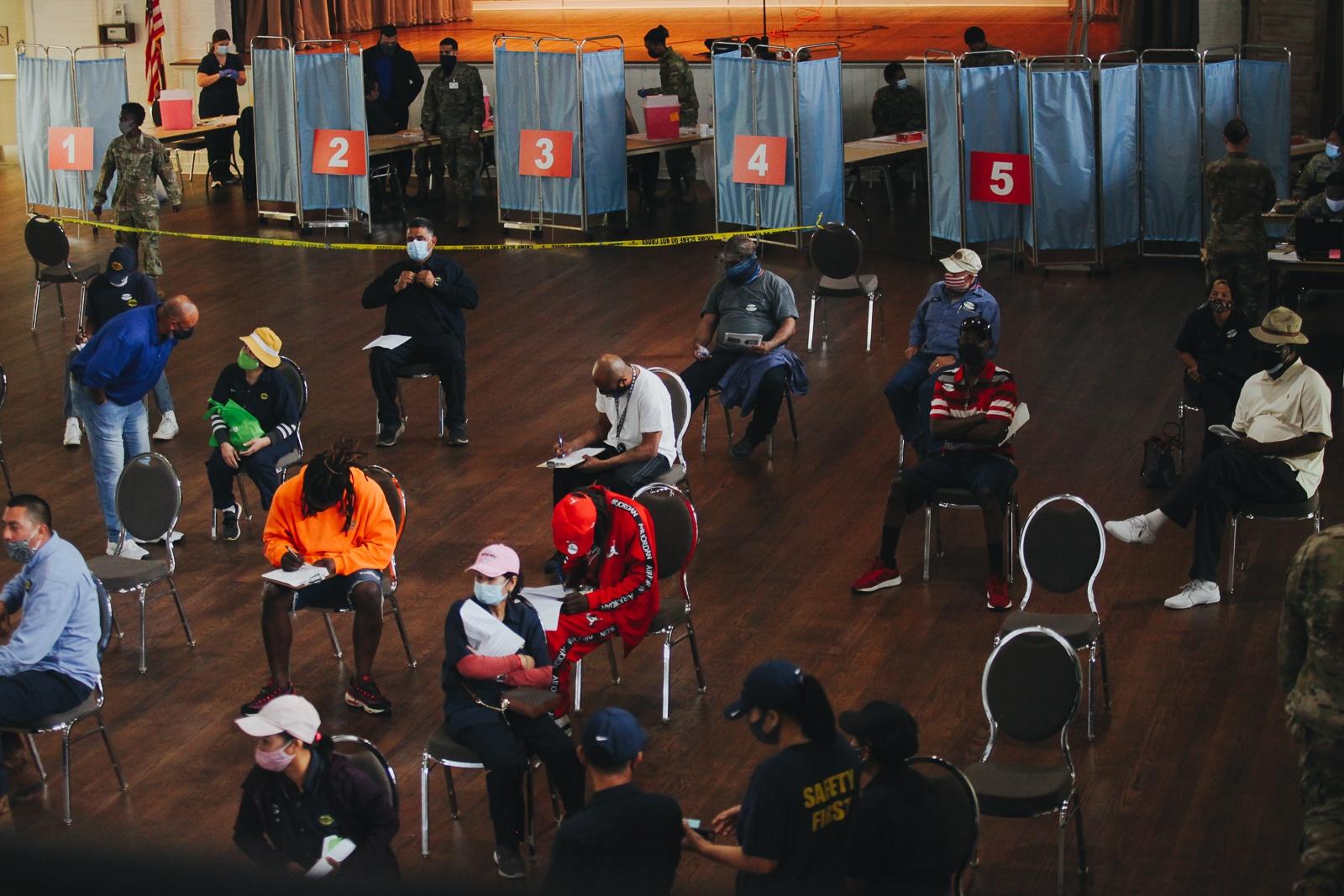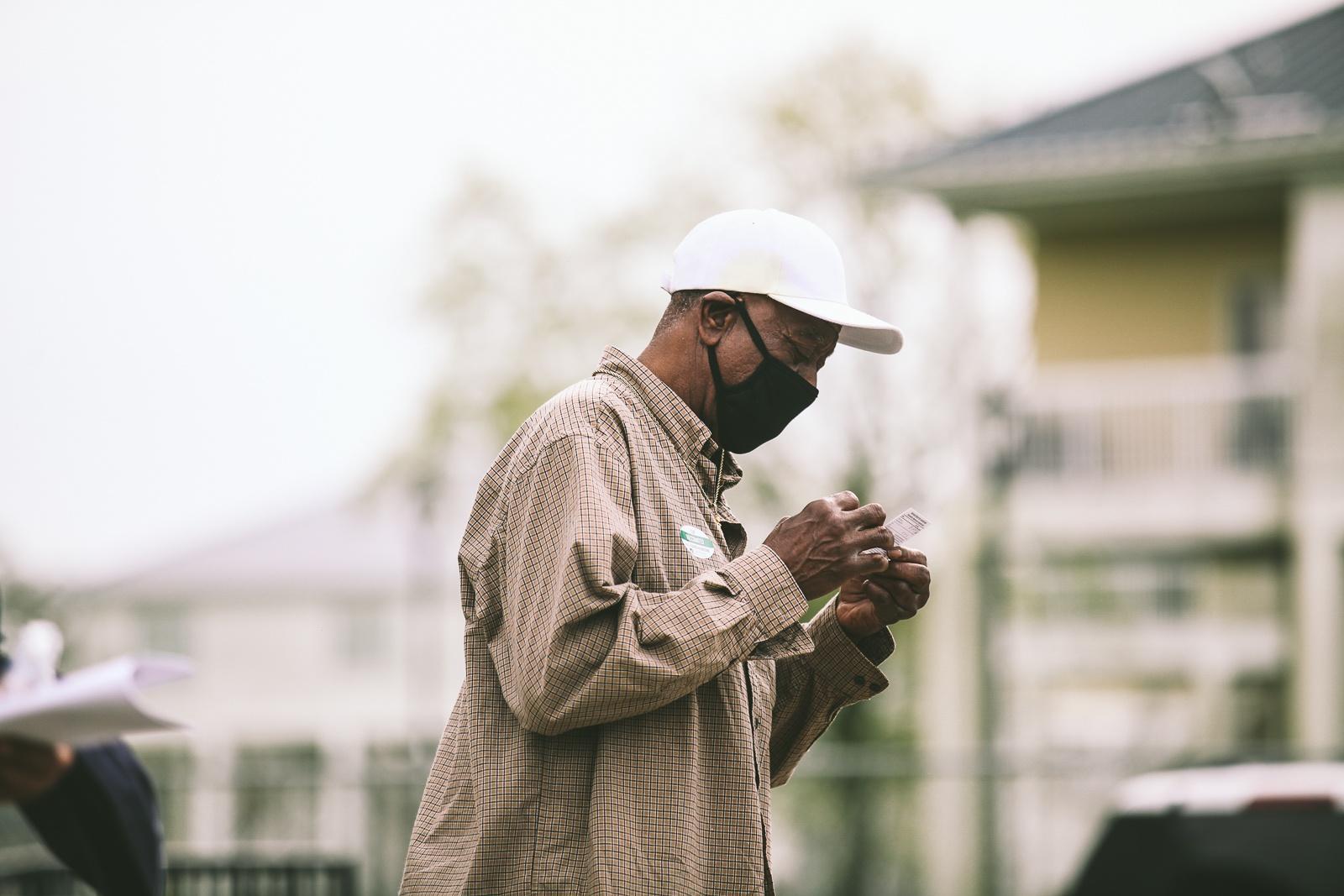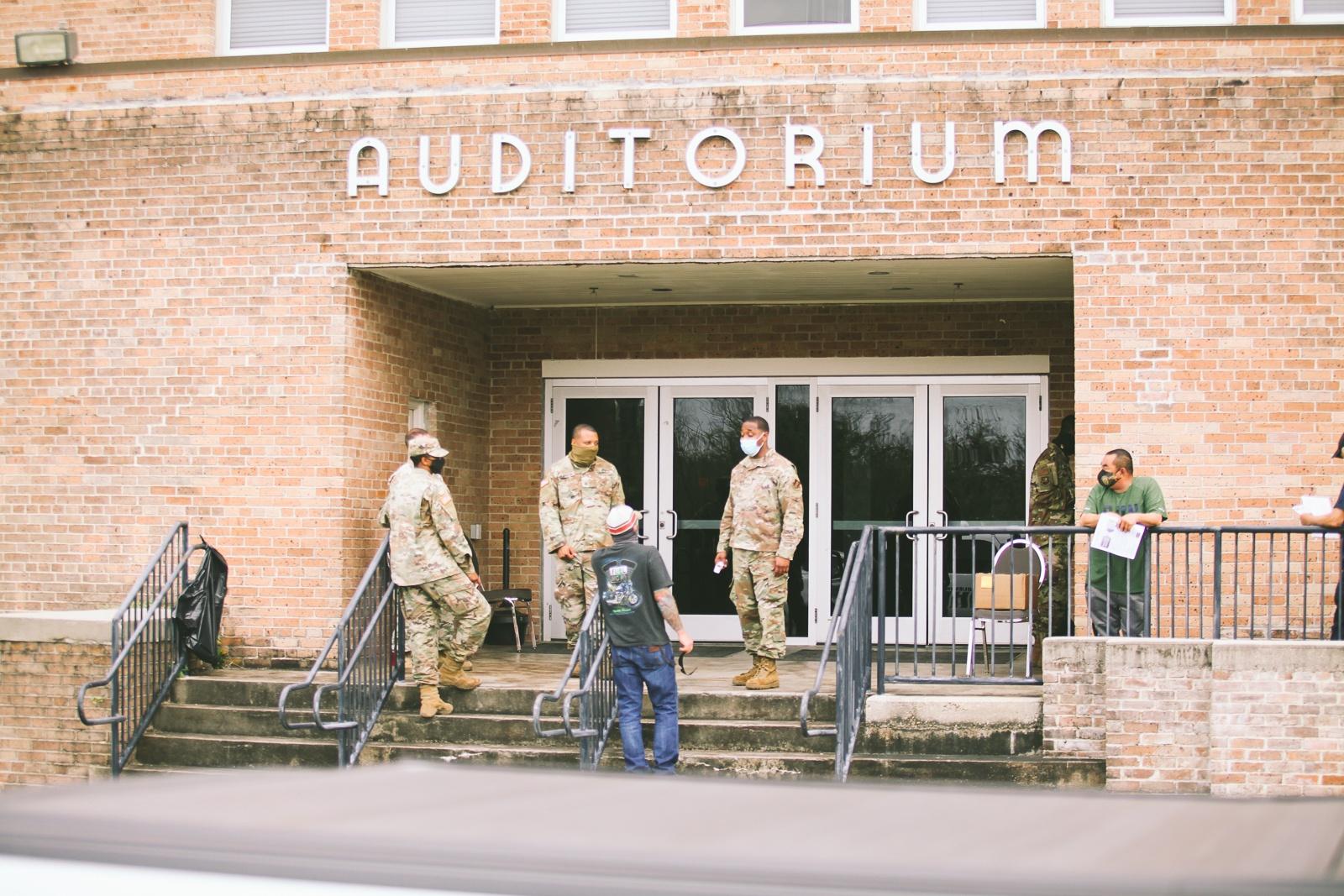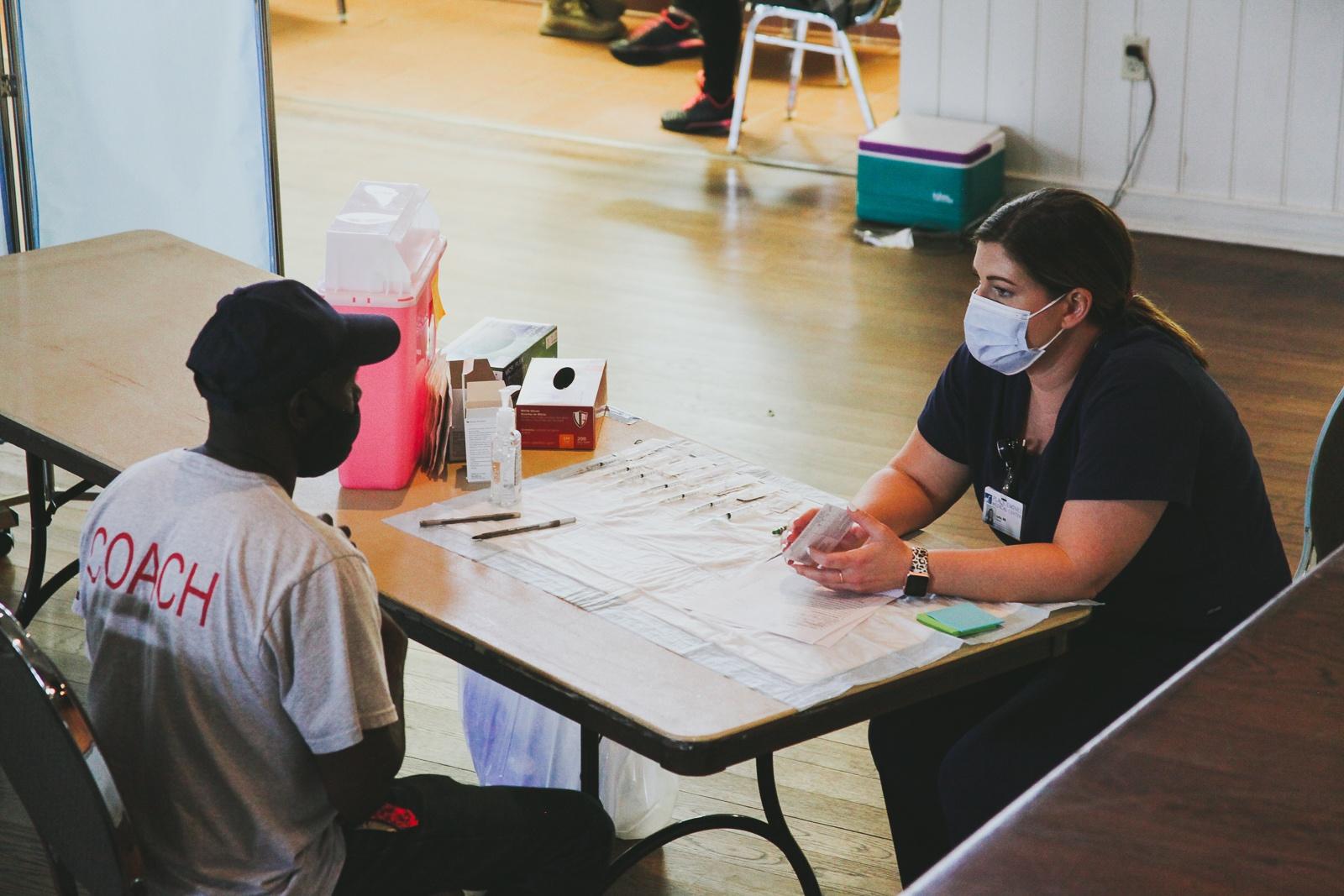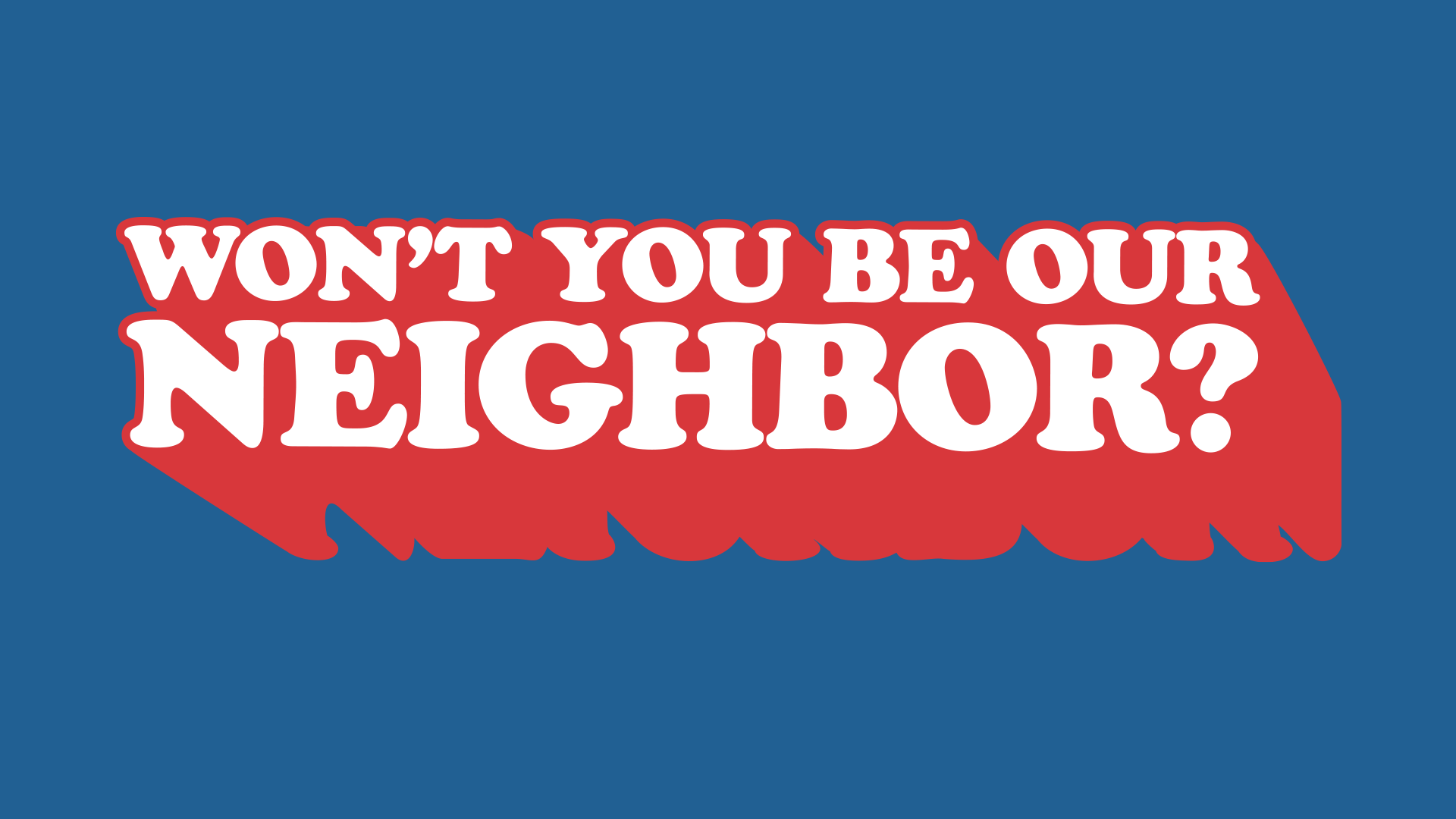In a large auditorium in rural Plaquemines Parish, La., hundreds of commercial fishers and processing plant workers got their shot in the arm last week. The mass coronavirus vaccination event was a five-minute drive from the docks that house their fishing vessels – right where the Mississippi River meets the Gulf of Mexico.
National Guard troops administered doses to more than 300 people during the event held specifically for workers at Westbank Fishing and Daybrook Fisheries, a processing plant that turns fish into products like pet food.
“To be honest I didn’t feel nothing, no difference. I still feel the same,” said Angel Arroyo, a welder at Daybrook Fisheries. “I know I won’t infect anybody else or catch the virus.”
Arroyo said getting the vaccine was a relief. Throughout the pandemic, there have been more than a dozen cases among commercial fishers and plant workers from these companies. Daybrook officials said their workers likely got the virus via community transmission, though Westbank admits their fishers got sick on their vessels.
Arroyo never got COVID-19, but many of his colleagues did and some of the workers lost family members as well.
“I was freaked out because I didn’t know if I got it or my family got it. So I was afraid about it,” Arroyo said.
In Louisiana, there have been more than 1,000 coronavirus cases at food processing facilities, which have been the top source of infections across industries. Similarly, in Mississippi and Alabama, hundreds of cases were tied to poultry plants, where most workers are low-income and Black or Latino.
This vaccination event in Plaquemines Parish was organized after the Louisiana health department received a message from a concerned person who was worried essential workers in these industries would be left behind.
“We realize we have to meet people where they are,” said Shantel Hébert-Magee, a regional medical director for the greater New Orleans area with Louisiana’s health department.
Along the Gulf Coast, health officials in the region are starting to recognize the need for a targeted approach in getting the vaccines to workers in these types of high-risk industries. As the rollout expands, health officials and community groups are learning more about how to make sure the vaccine is not only available, but truly accessible. Here are some lessons so far:
